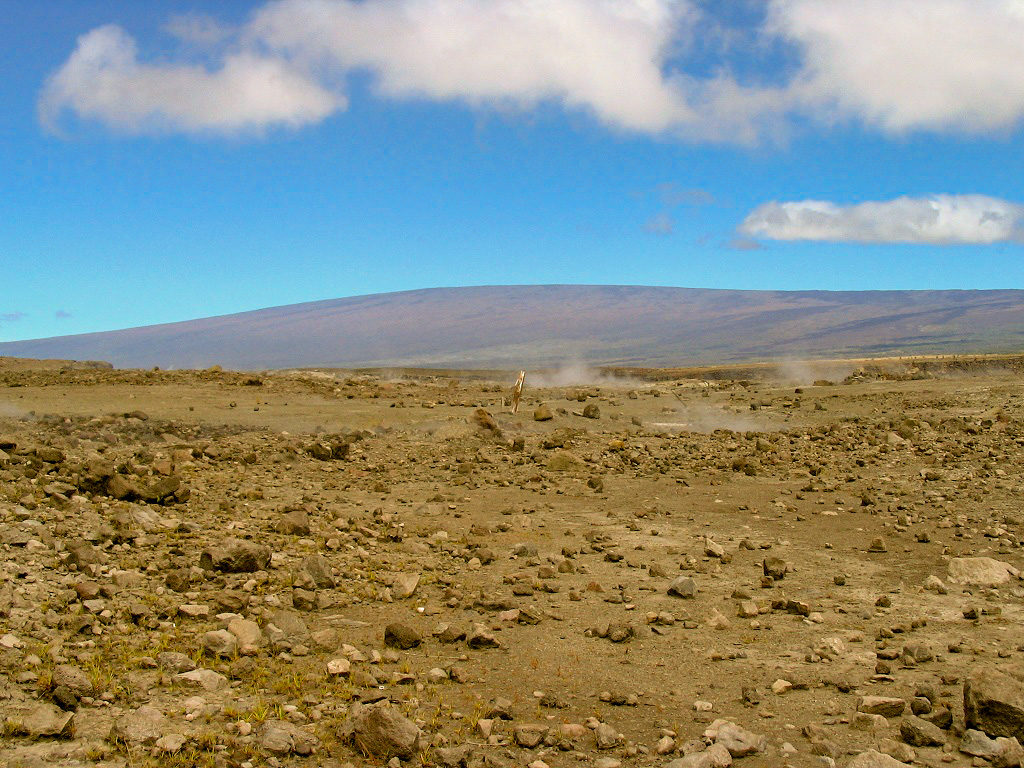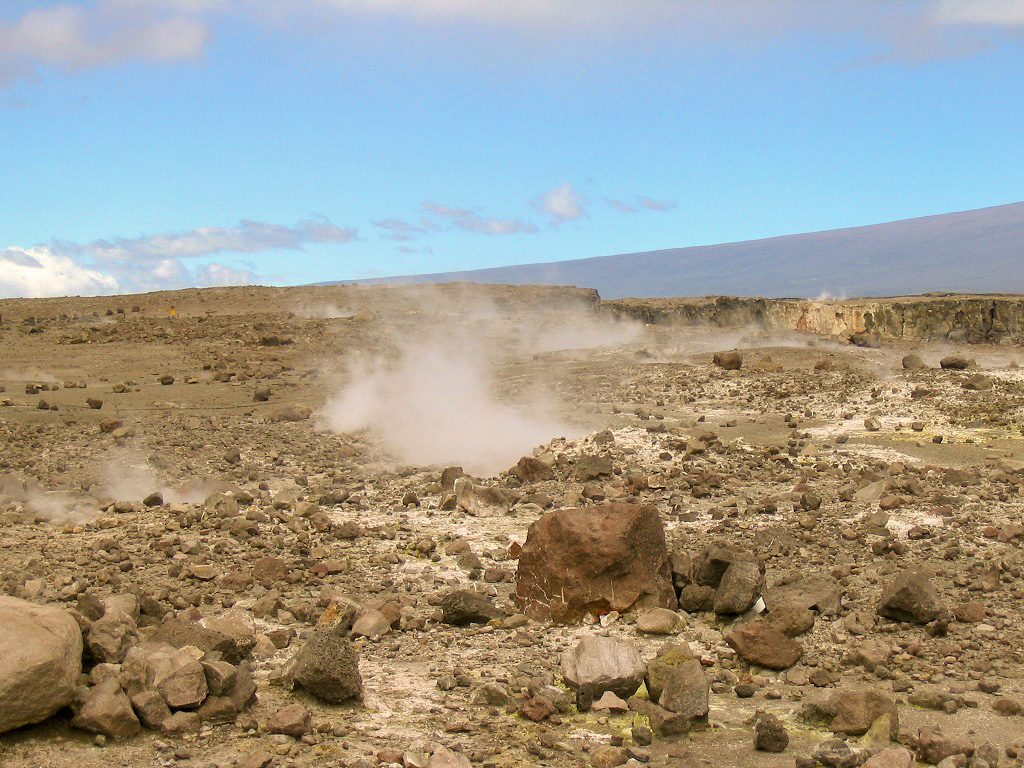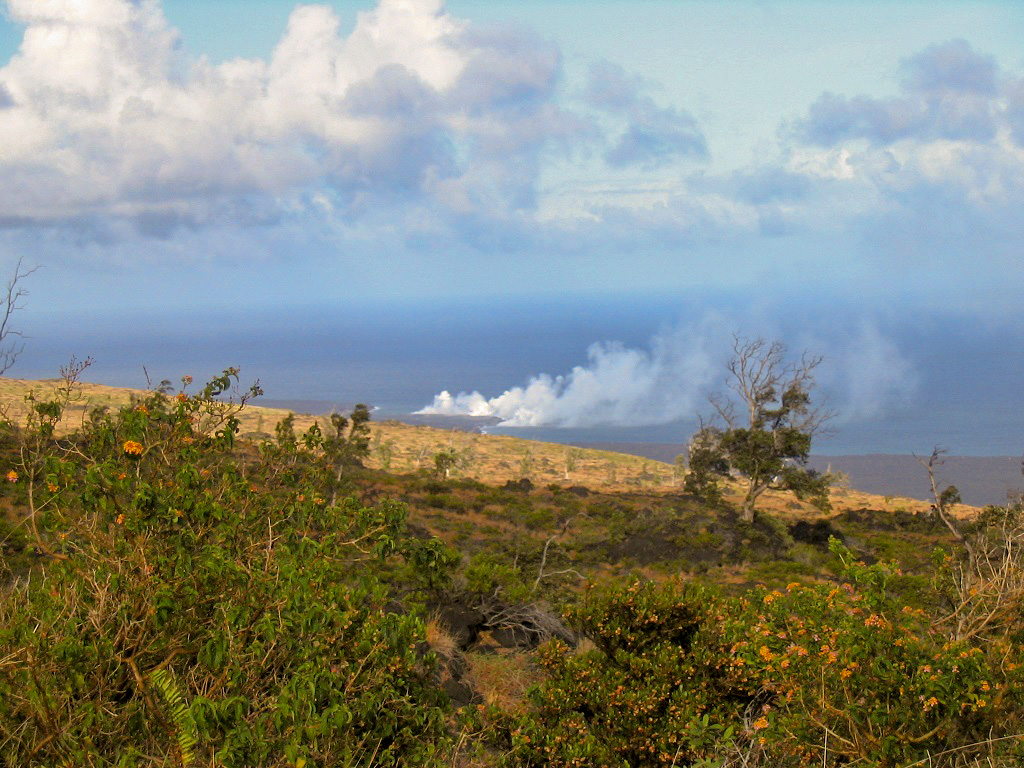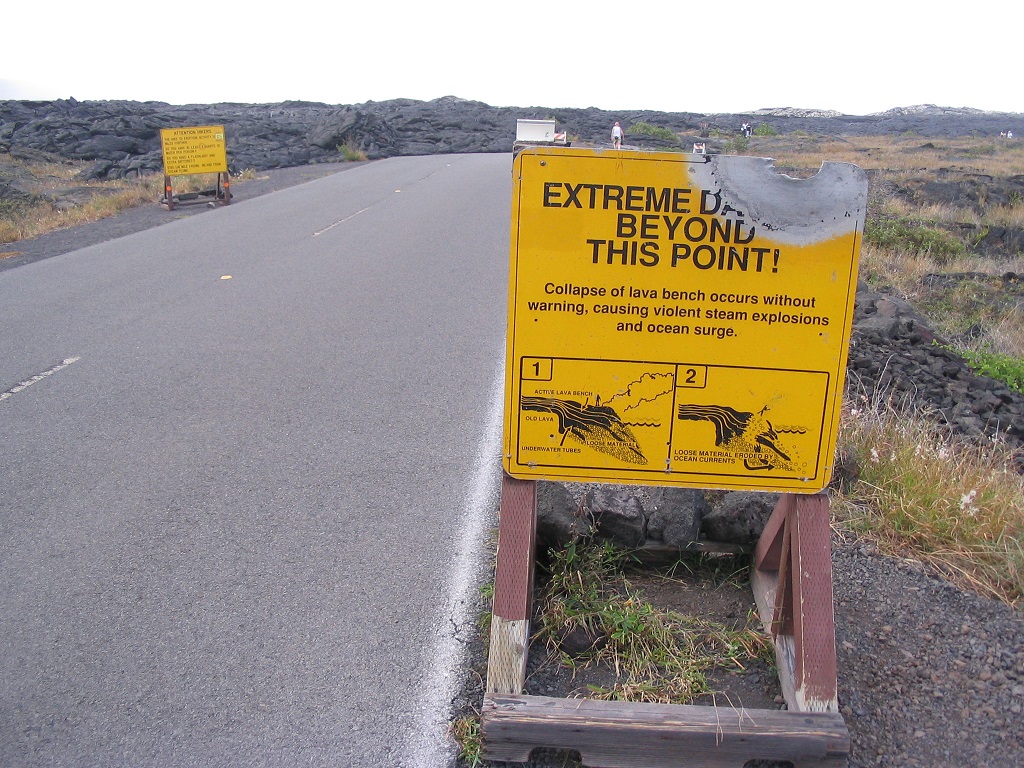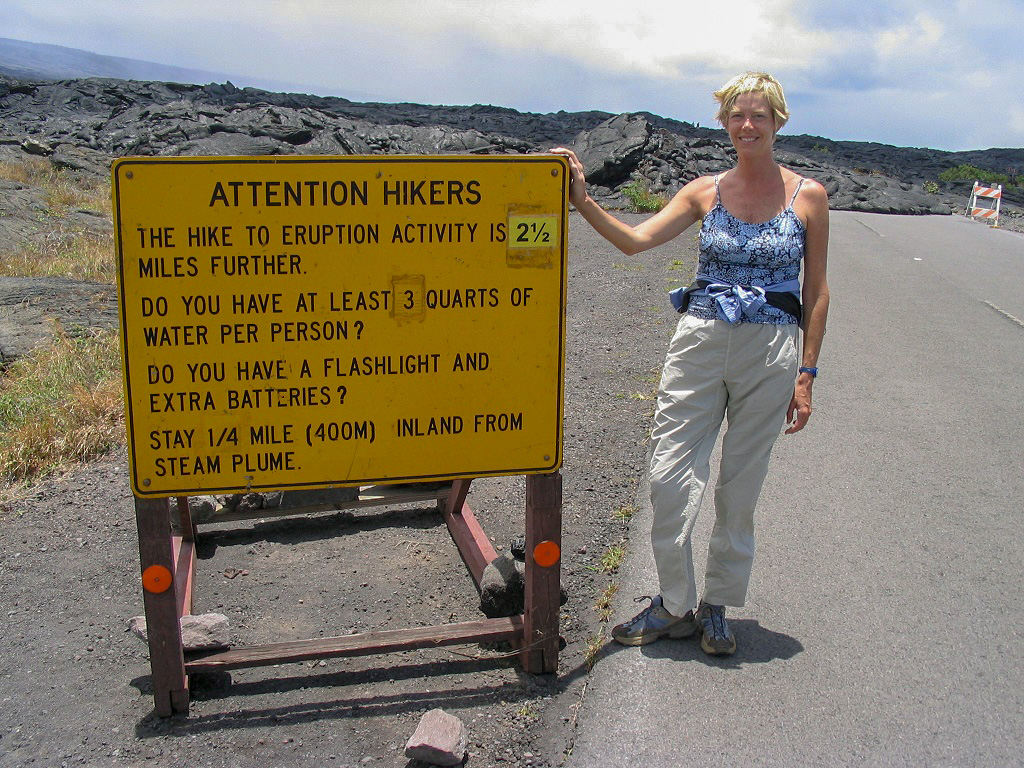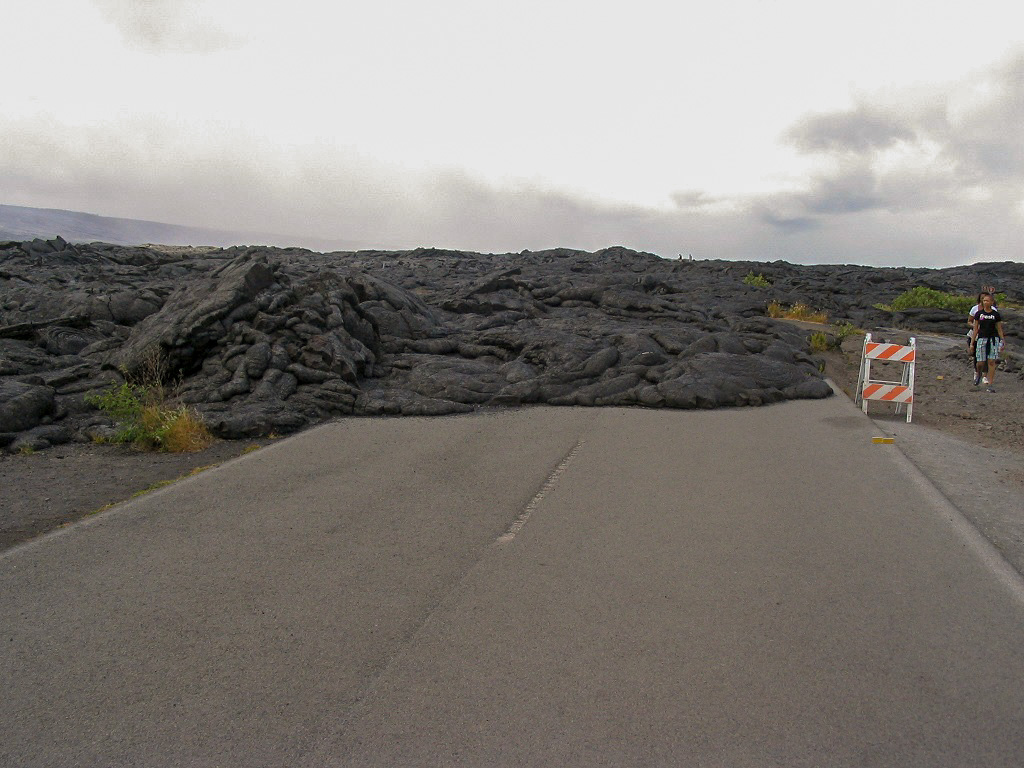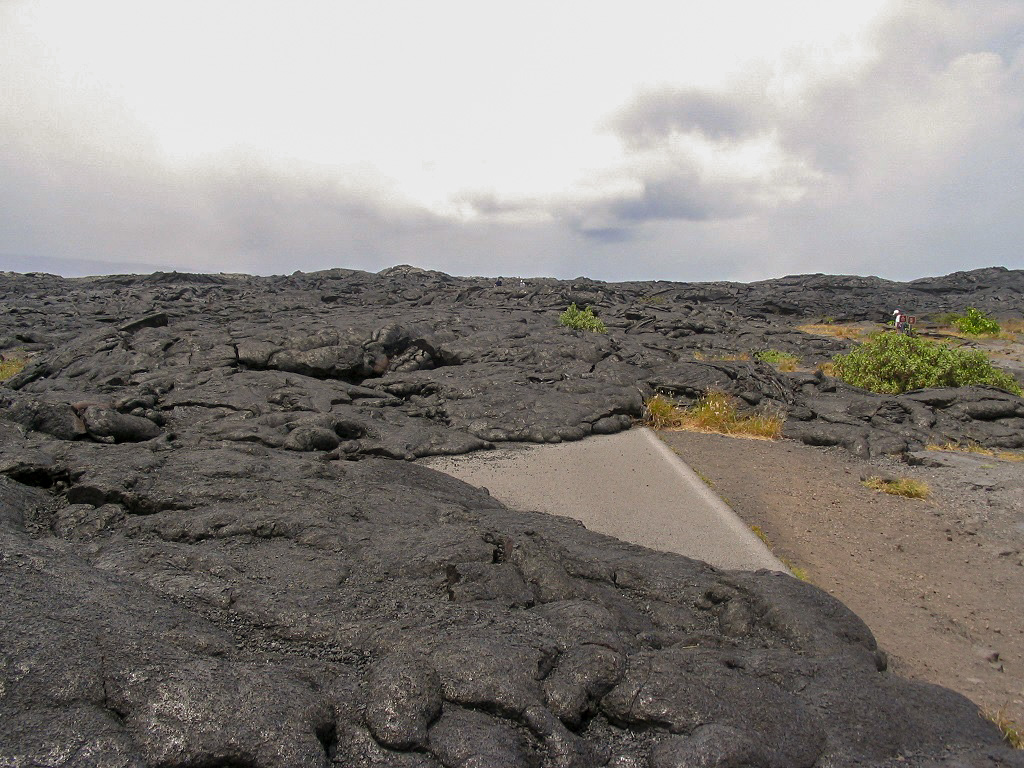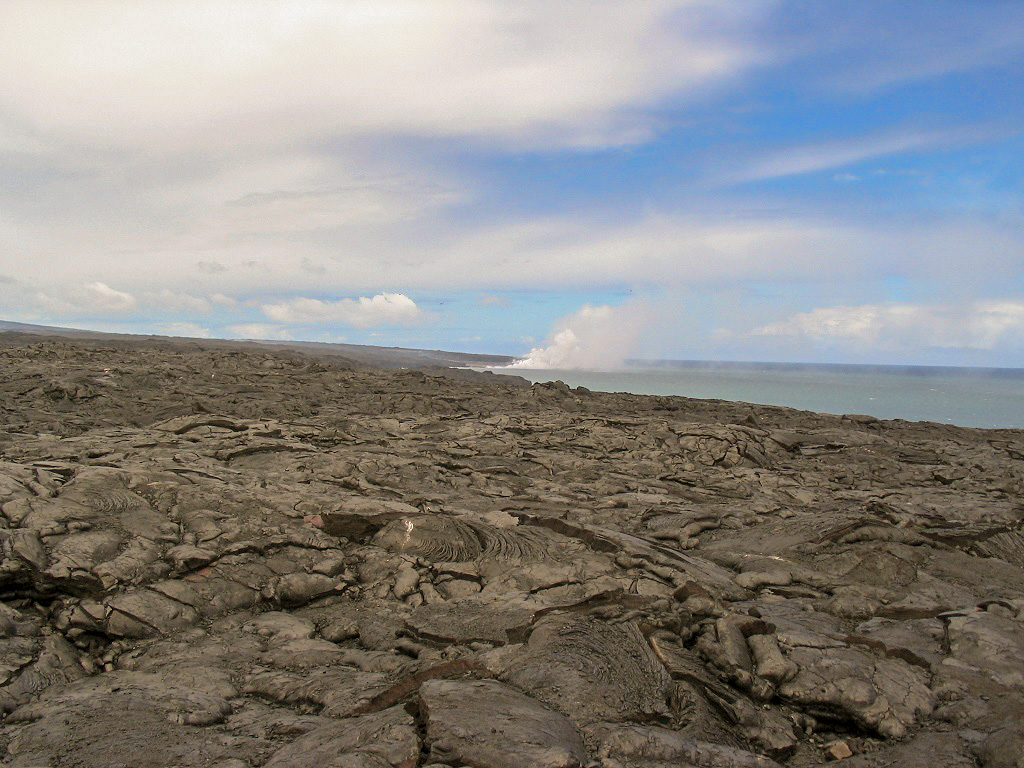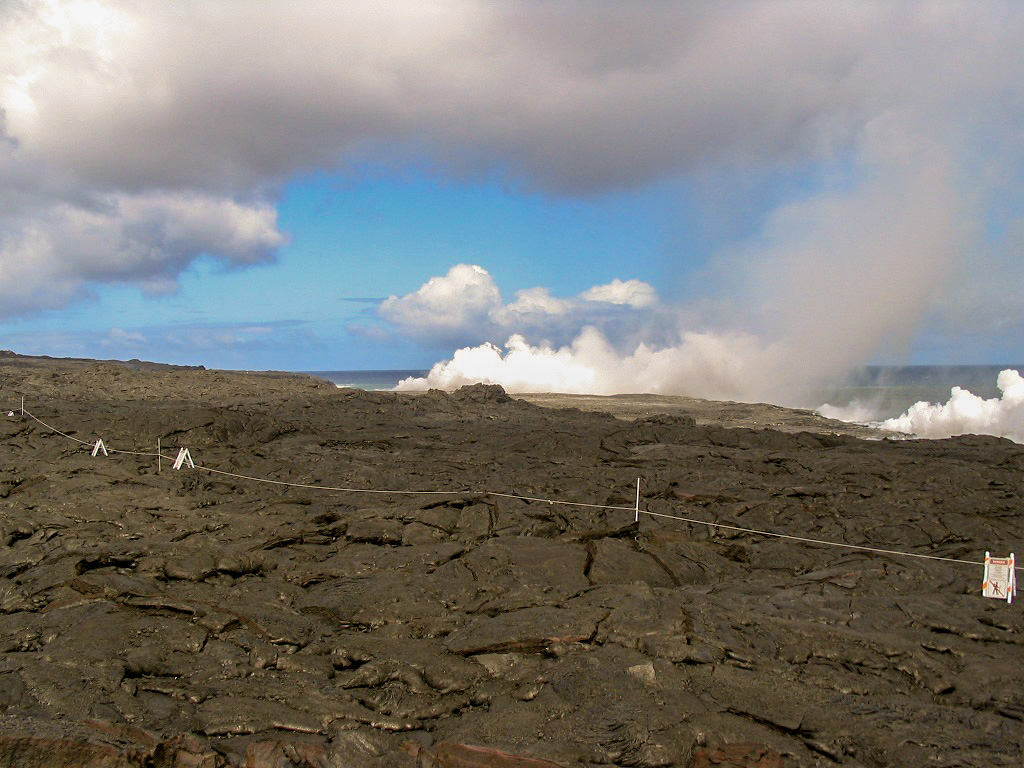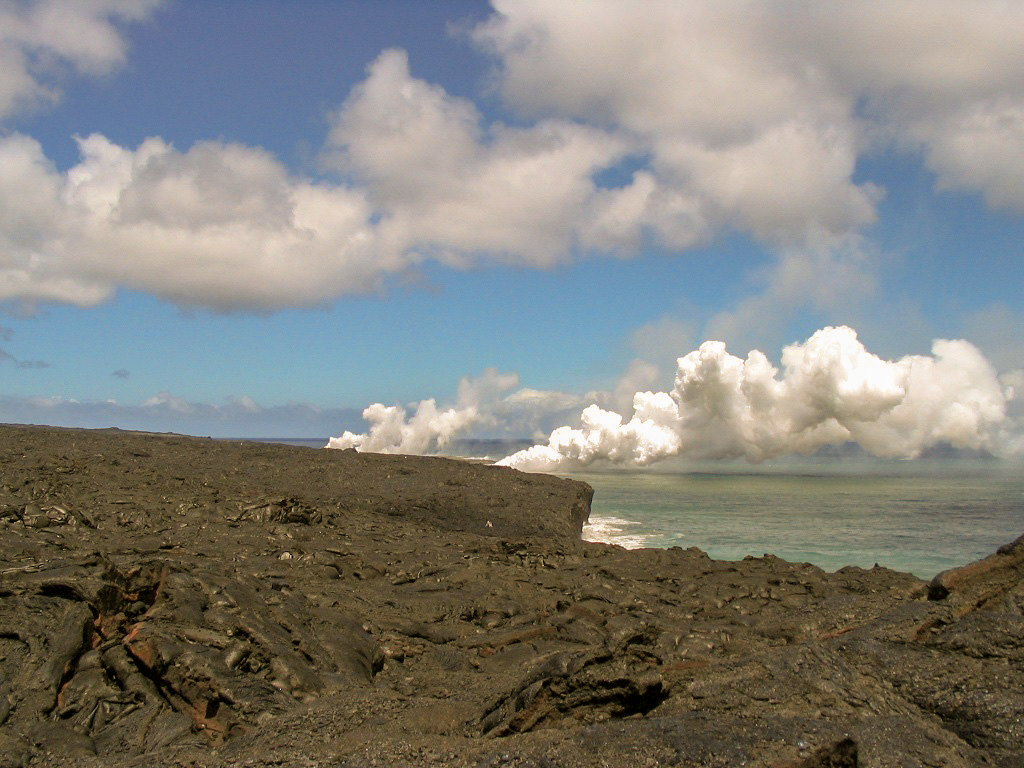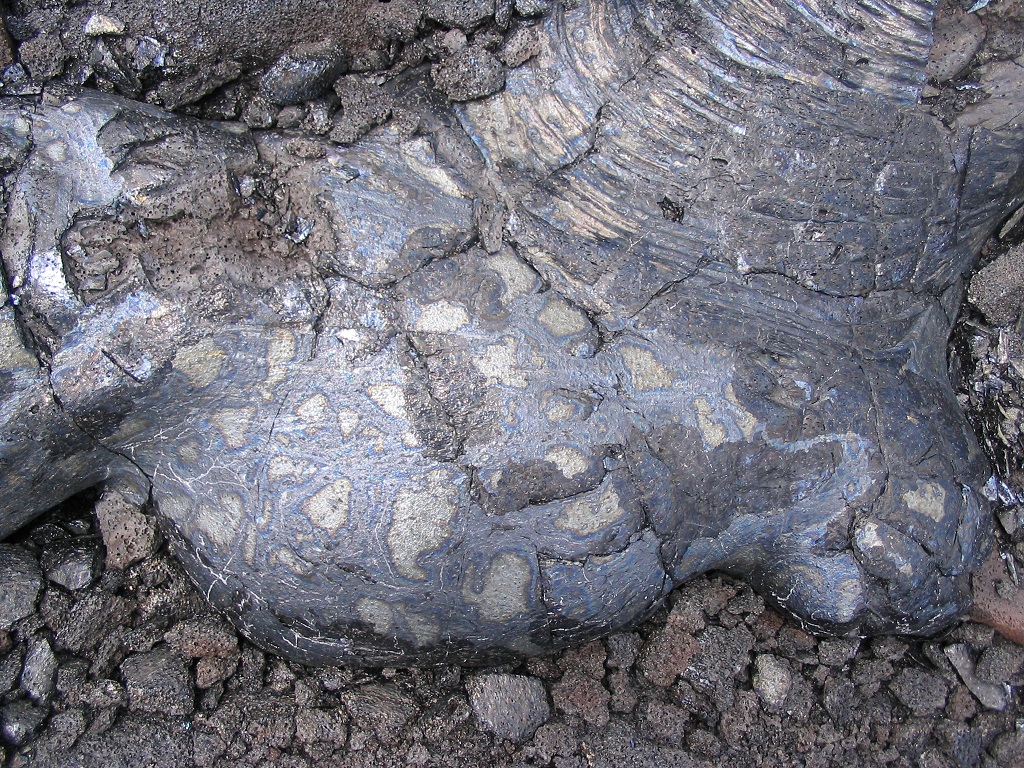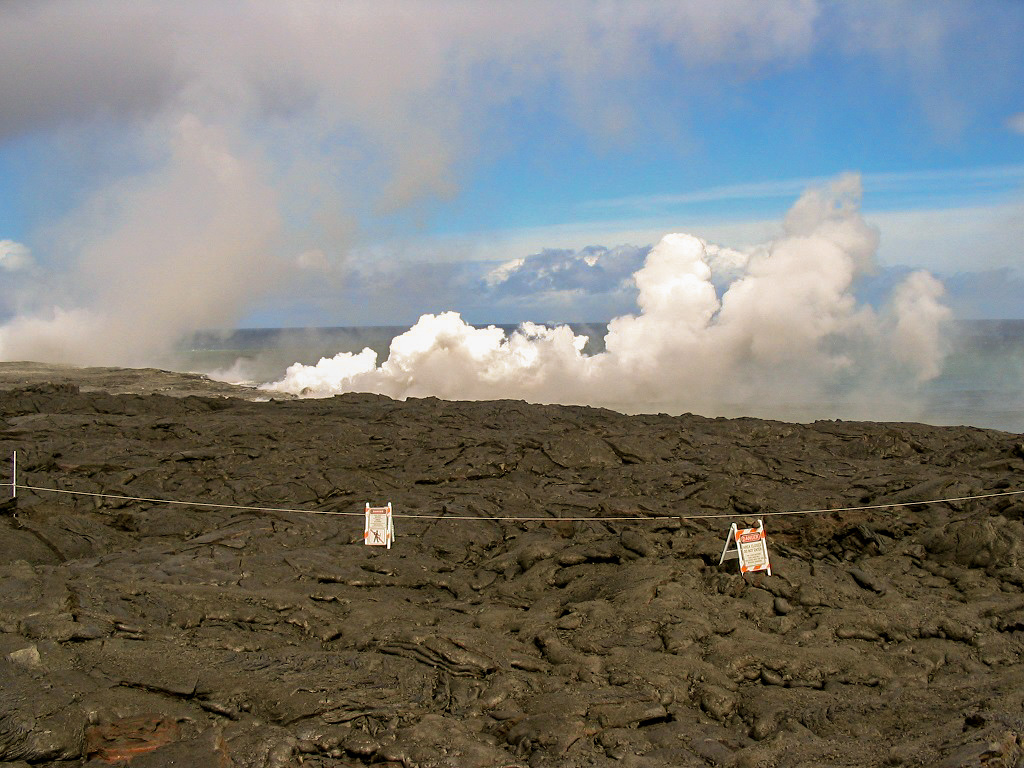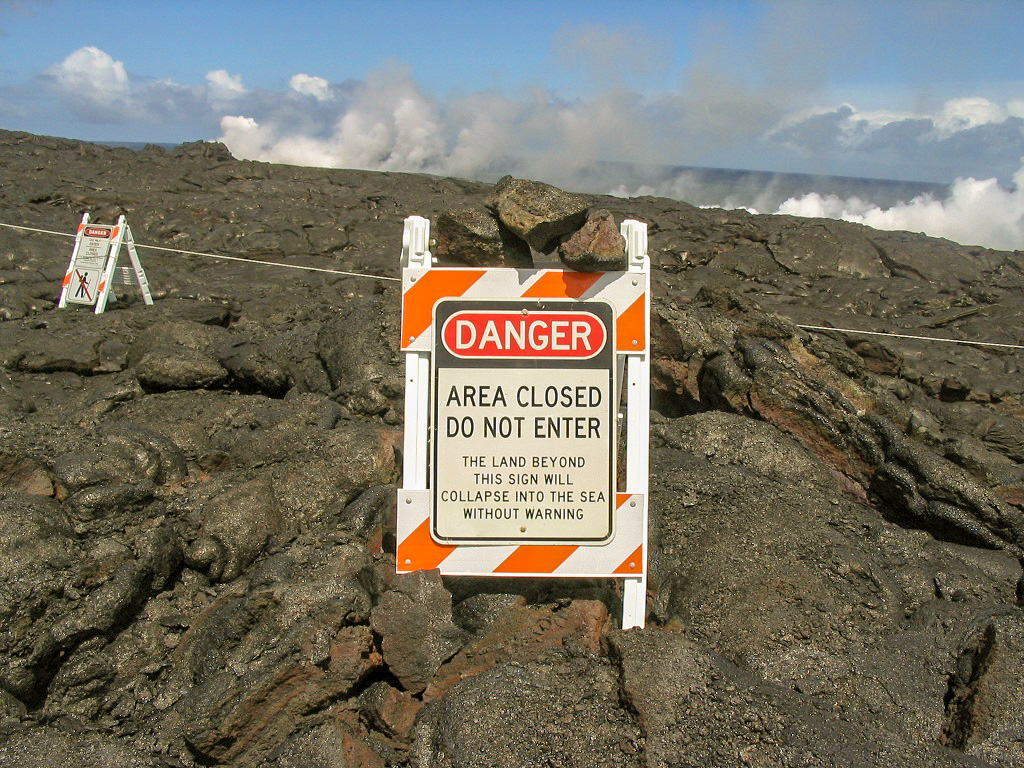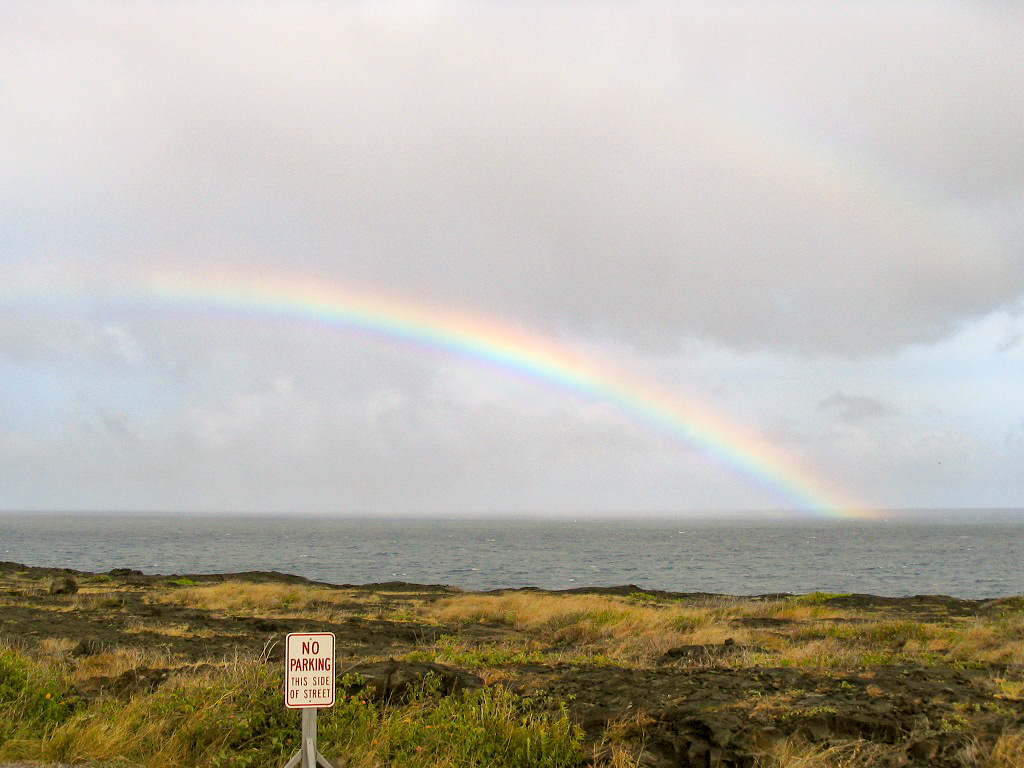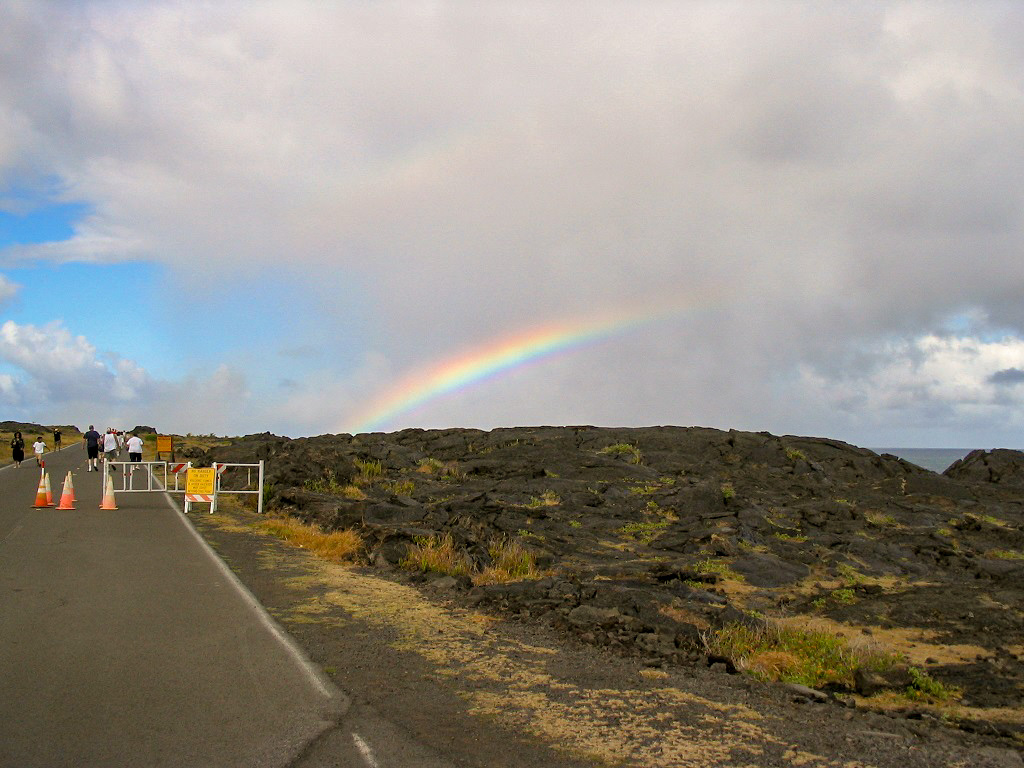
Kilauea Volcano & Lava Flows Hike
Hawaii Volcanoes National Park, Hawaii • July 8, 2006 |
|
We visited the Hawaii Volcanoes National Park, where Kilauea Volcano is active (and has been so for nearly 40 years now). We were hoping we'd see actual lava flows but knew that the flows are fickle and dangerous so we'd have to be in the right place and the right time to see one. We left Kona and drove to the park, driving below massive Mauna Loa the entire way and enjoying the scenery which ranges from tropical forests to stark desert on Loa's south flanks. 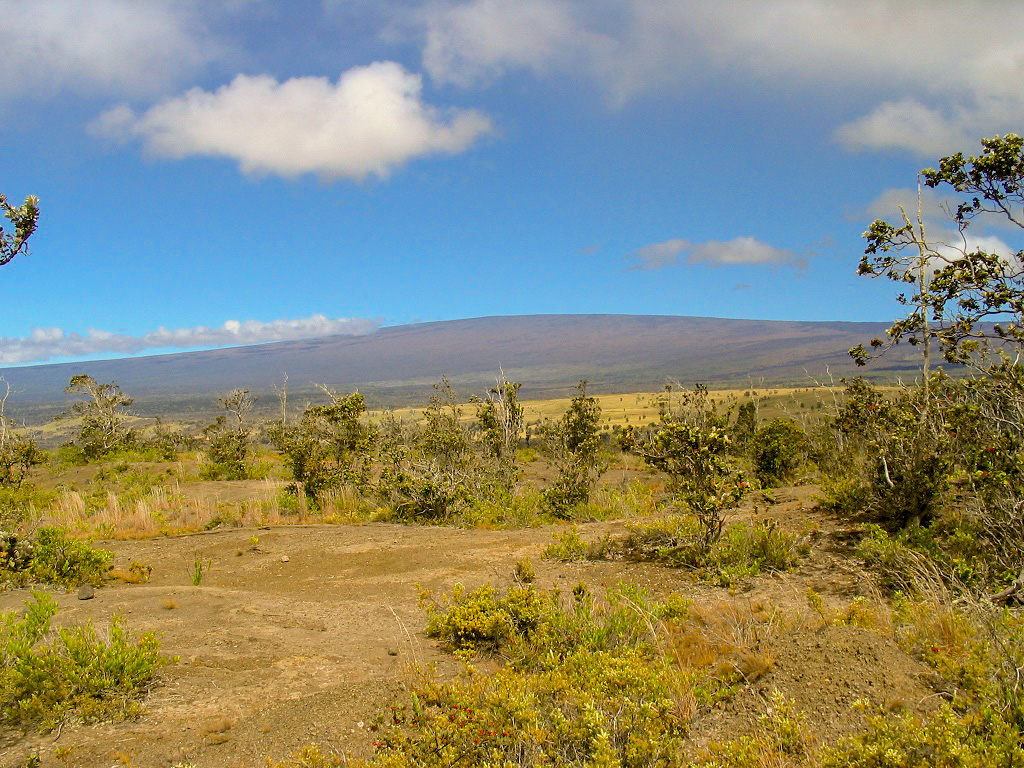 Desert-scape below Mauna Loa
We arrived at the town of Volcano in a light drizzle, then drove into the park and to the visitor's center. Our plan was to hike a few trails near the Kilauea caldera and go wherever it was interesting. However, when we arrived at the visitor's center, we learned that a new flow into the ocean was gaining in intensity and that plumes of steam and perhaps the lava itself could be seen. We drove a circuit around the Kilauea crater, and a short hike to an overlook into the caldera, but soon we were on the Chain of Craters Road for the 19-mile drive to the coast and the active flow. We were surprised how far up we were at Kilauea: almost 4,000 feet above sea level. The drive down to the coast drops that entire amount and is a fun, if steep, downhill journey. Along the way, we passed old flows, posted with signs mentioning the year of the flow. About five miles from the end of the road and still high up on a cliff, we saw our first views of the steam plume, off to the east. 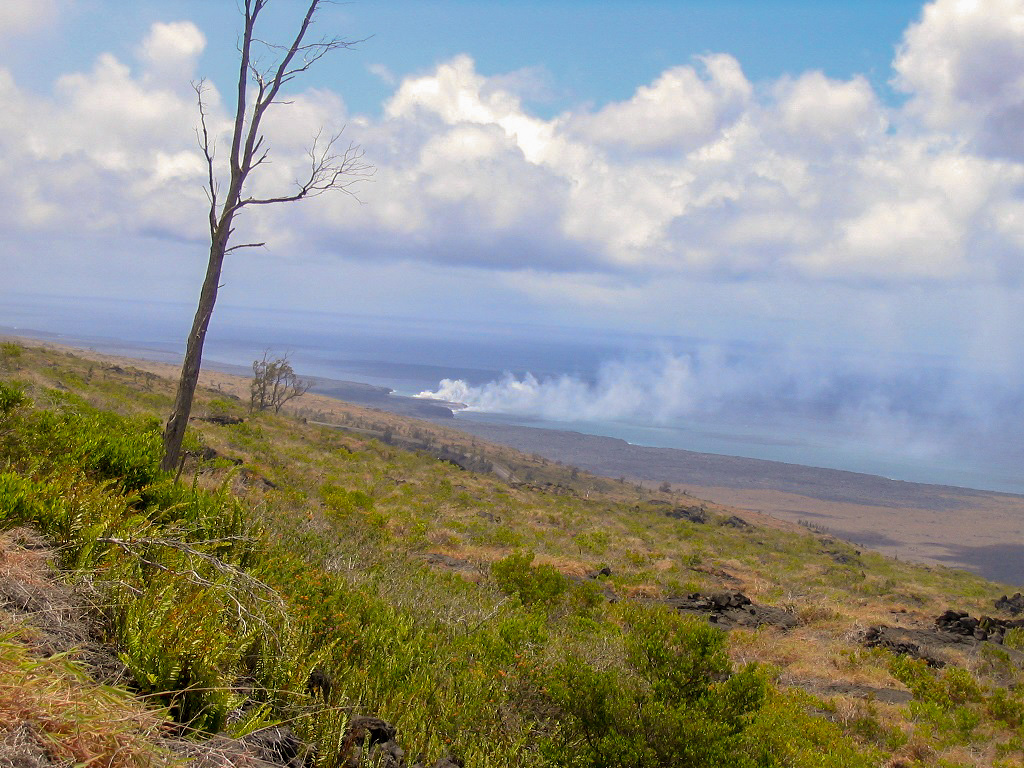 The steam plumes from higher up as we descend to the ocean
We drove to the eerie coastland, black rocky lava flows occasionally punctuated by scraggly plants and grasses, but essentially a coastal desert. The final mile of the road is along the coast and ends short of where the lava flow ran over the road around 2003. The park service maintains a portable (for obvious reasons) ranger station. They block the road a half-mile from the flows itself, and you have to park on the side of the road. There is no parking lot, and it's first-come, first-serve. We were among the first and still found ourselves about the 30th car along the road. We got our boots and drinks and started in. Soon, we came upon the hardened lava itself. 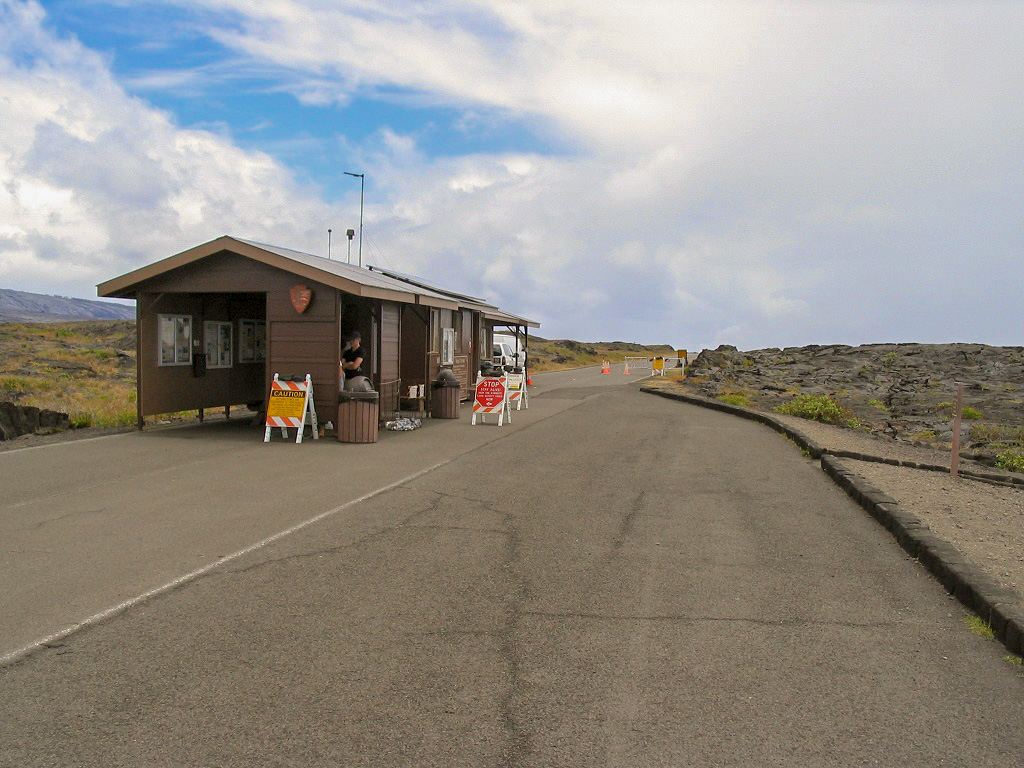 The mobile ranger station
Signs at the end of the road make ominous warnings about the land falling into the sea at a moment's notice, and to be extremely careful. The hike to the active flow covered about 2.5 miles, all of it on the glassy, crunchy, ankle-twisting lava, contorted and cracked into complete chaos. We had to watch every step the entire way. The park service marks the route in plastic posts and beacons. You just go from one to the next, usually spaced about a half-mile apart. The lava itself was like a roiling sea: smooth and calm in some areas, contorted and pushed into big waves and walls in other areas. It drizzled on us for about 10 minutes, but otherwise was actually hot and humid. In 90 minutes, we had come to the final leg, from the last beacon to the roped-off area near the plumes. The rock here was crunchier and newer, possibly just weeks old. We both got spooked as we walked up to the ropes, as if they would protect us from a cataclysmic landslide into the ocean. Popping through the rock into a lava flow was also a possibility. At the ropes, we could not see the lava, but the steam plumes could be seen and heard, louder than a locomotive or a jet engine (or both). The crashing of the waves below us, the wind and the instantaneous vaporization of the water at the lava flow created unbelievable noise. We could see "lava-bombs" (tephra), when the action of the lava hitting the cold seawater created little explosions of blobs of lava, flinging them into the air. 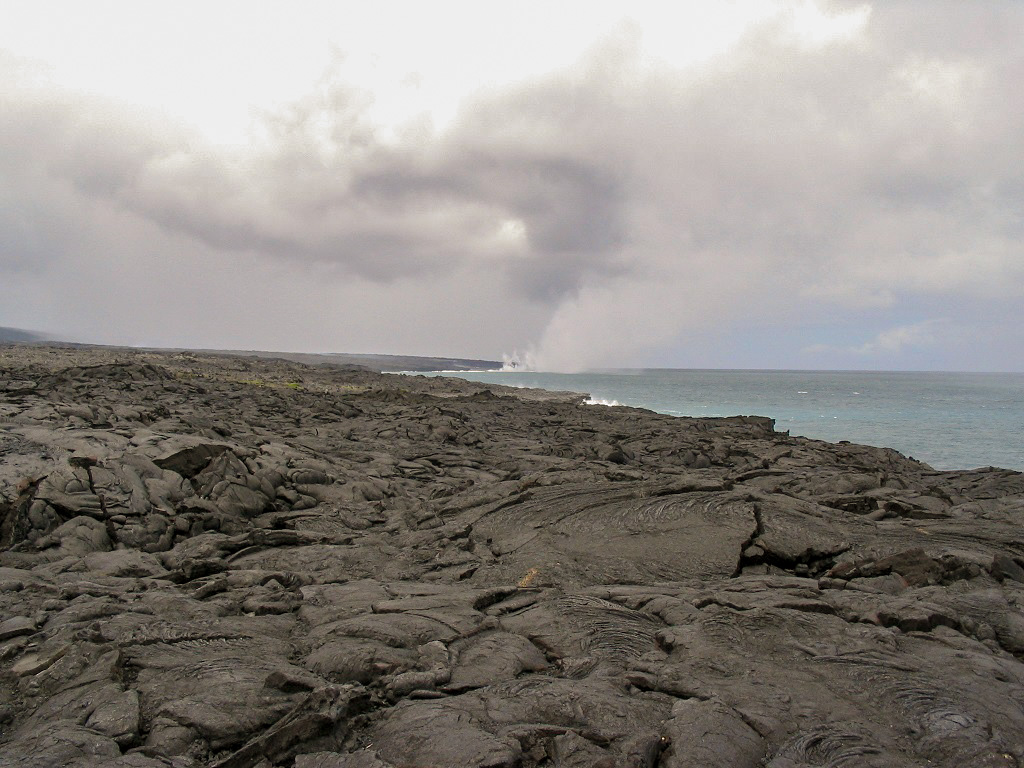 Now on the lava, steam plumes ahead!
We were 250 feet from the closest plume, and 80 feet above sea level, separated by a small cliff where a landslide from late 2005 dropped a lot of the land into the ocean. We saw those lava bombs fly into the air 50 feet above us (not directly overhead). Amazing isn't strong enough a word. Awe-inspiring. We never felt so much like molecules before in our lives. We stayed for about 40 minutes to take in this natural wonder. We only hiked out because we had to, but we took our time and stopped for photos and breaks. Fittingly, a large rainbow developed over us as we got back to our car. By this time the row of cars had stretched over a mile, with more coming. We arrived back in Kona that eveing, exhilirated and fortunate to have been so lucky to see this amazing sight. 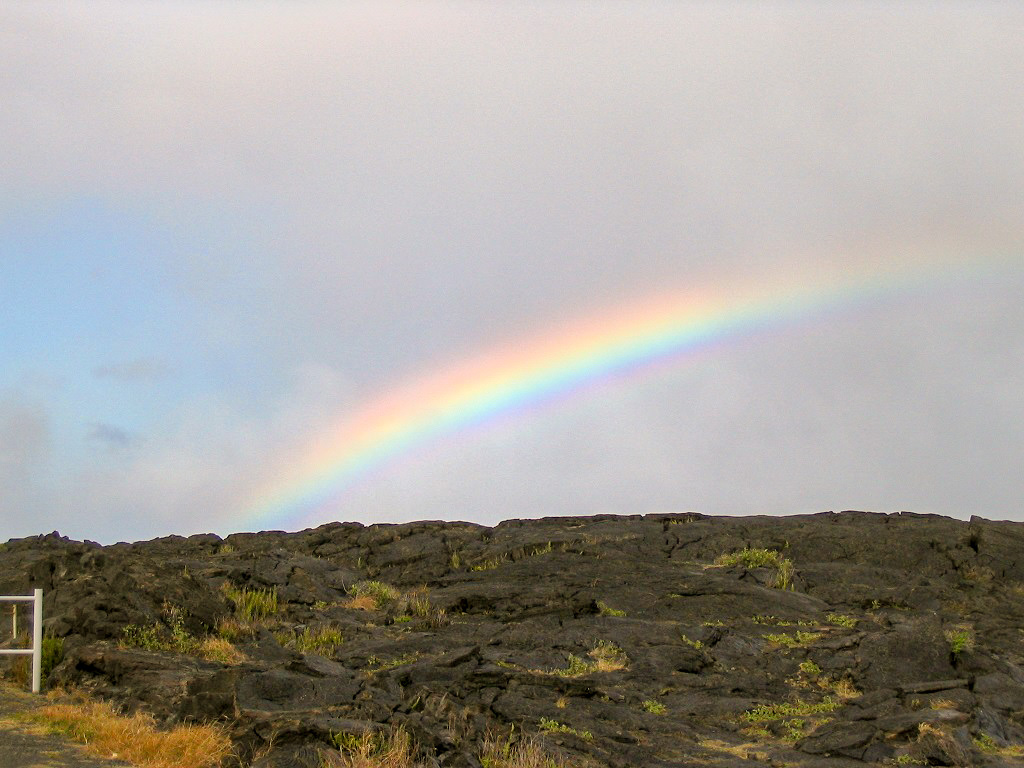 Rainbow as we exit
|
|
(c) 2006-21 Scott Surgent. For entertainment purposes only. |
